Light Emitting Diodes (LEDs) are electronic components that provide illumination to circuits. There are a plethora of applications that use LEDs.
Why LEDs need resistors
The main reason LEDs need resistors is to protect the LED from excessive current which can permanently damage the LED. LEDs have current ratings which indicate the optimal current at which the LED operates effectively. Resistors are devices that have the function of limiting current within the current range of the LED making them the perfect component to protect a LED from damage.
How to connect resistors to an LED?
A resistor is connected to the LED in series. Below is an image of one of the simplest LED circuits which uses a resistor to protect it.
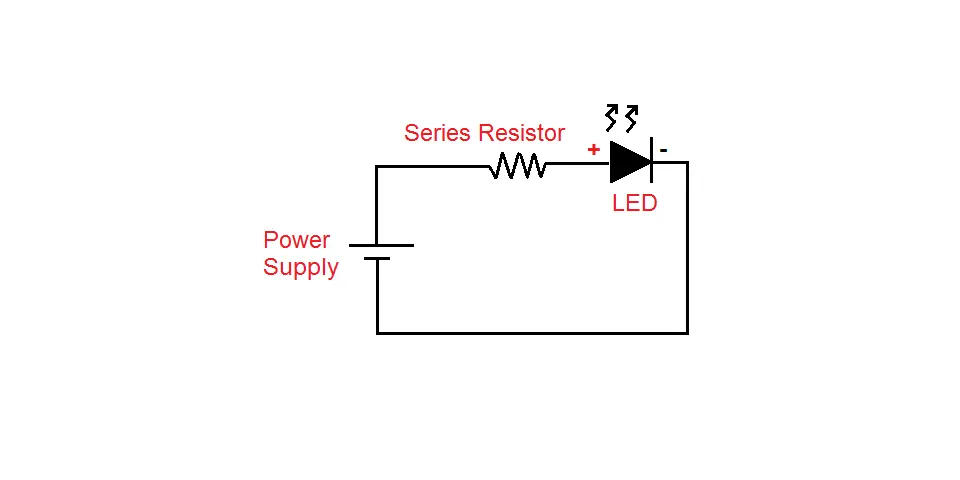
What size resistor do you require with an LED?
The above circuit shows the configuration of an LED and a resistor in a simple circuit setup. But, you cannot pick any random resistor value and connect it to the LED. Choosing the right resistor resistance value comes down to three variables; Voltage (power supply) , LED current , LED Forward voltage drop.
The voltage source rating is how much voltage is being supplied to the LED. So, for example, the LED could be connected to an AA battery which is usually rated at 1.5 volts.
As mentioned earlier, resistors are needed to protect LEDs from excessive current. LEDs come with a maximum current rating that should not be exceeded. This is the value of the current that we need for the calculation of the size of resistor needed. The maximum current can be found in the LEDs datasheet.
LED Forward voltage drop is the amount of voltage loss across an LED. LEDs come in a variety of sizes, shapes, and colour, each having their own unique voltage drop. This can also be found in the LEDs datasheet.
The equation below is used to calculate the size of resistor needed for a particular LED;
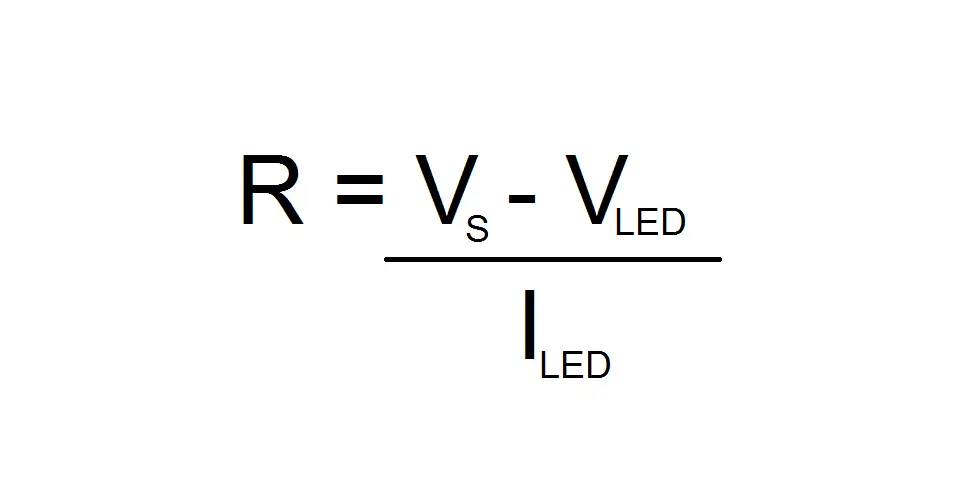
R represents the resistance, VS is the voltage of the power supply, VLED is the LED’s voltage drop, and ILED is the maximum allowable current for that LED.
Example of calculating the size of resistor needed for an LED
To better understand how to calculate the resistance needed for an LED, let’s take a quick look at an example.
Let’s say we want to power a Red LED using a 5 volt power supply. Red LEDs typically have a forward voltage drop of 2V, and a maximum allowable current of 30mA.
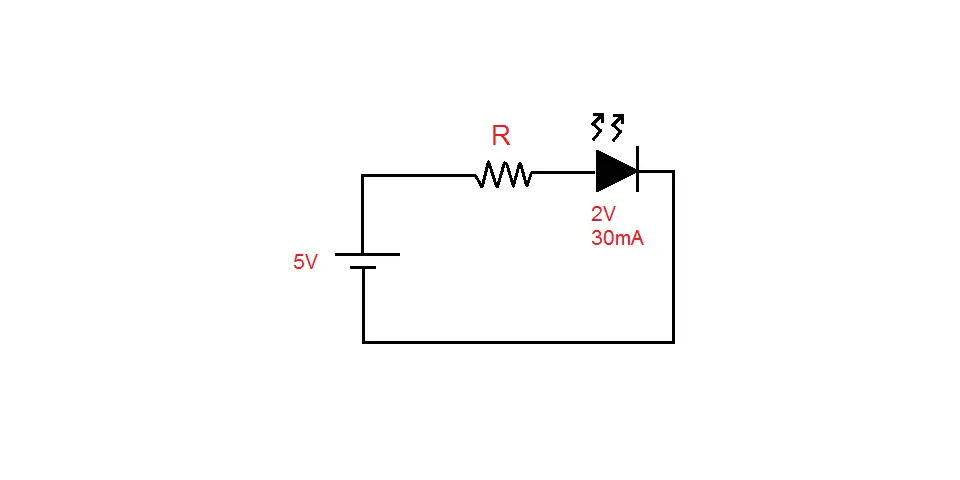
Next, we substitute the values into the equation above;
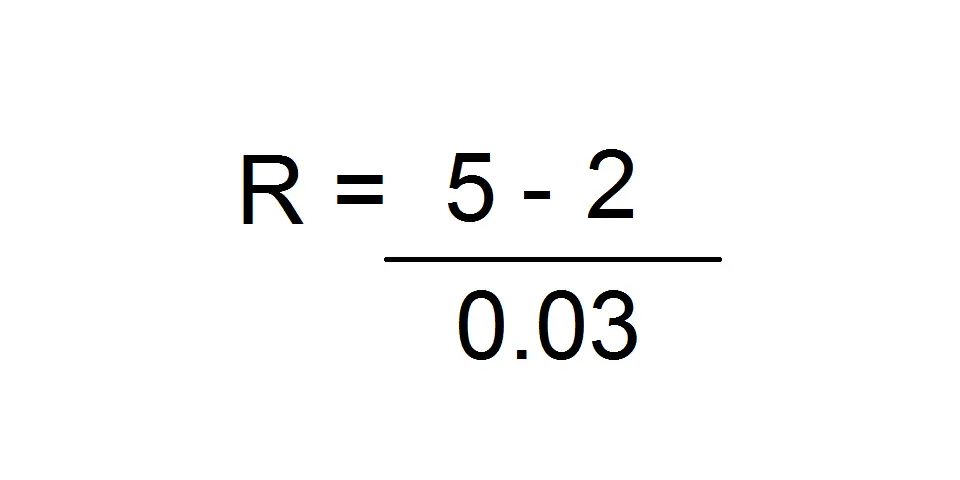
This gives us a resistance of 100 ohms. So, to properly power the LED and protect it from any excessive current, a 100 ohm resistor is required.
Resistors for multiple LEDs; Best practices
We have been discussing the simplest circuit configuration which includes just one LED and one resistor. However, there will be instances where multiple LEDs will need to be connected together. So, how many resistors are needed now?
There are two scenarios to consider; series configuration and parallel configuration.
Scenario #1: Series configuration
The first scenario is connecting up multiple LEDs in a series configuration. This involves connecting the negative lead of one LED to the positive lead of the next as see below.
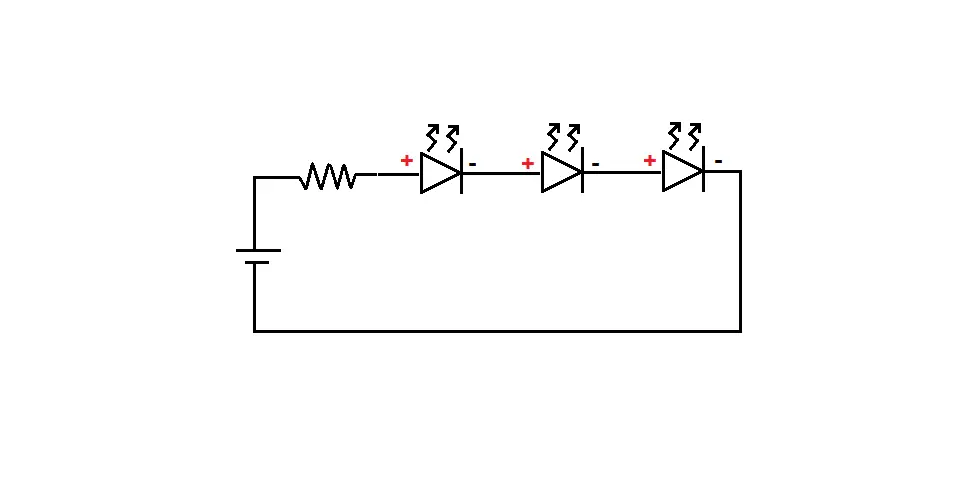
When multiple LEDs are connected in series as seen above, the total forward voltage drop is equal to the sum of the individual voltage drops of the LEDs (as current in a series circuit is shared, but voltage is divided). This means that the voltage source (power supply) needs to be a voltage that is equal to or higher than the sum of the LED voltage drops to ensure the LEDs are powered adequately.
To calculate the resistor needed in this scenario we still use the same equation as before. However, we first need to add the total forward voltage drops of the LEDs.
So, if we had three RED LEDs, we know that their voltage drop would be 2V each giving a total voltage drop of 6V (2V x 3). We also know that the maximum allowable current is 30mA. Now if we had a 10V power supply, plugging these values into the equation (10 – 6/0.03), gives us a resistance of 133 ohms.
Scenario #2: Parallel configuration
The second scenario is connecting up multiple LEDs in a parallel configuration. This involves connecting all positive leads of the LEDs together, and all the negative leads together.
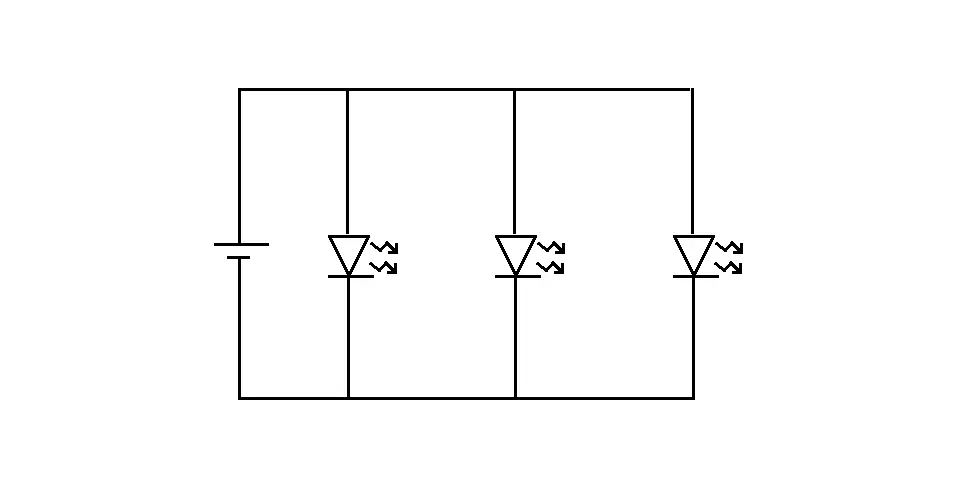
The common practice is to connect one resistor for multiple LEDs. However, even if the LEDs are of the same size and colour, their forward voltage drop can vary slightly. By using one resistor for all LEDs the current will be limited to a value governed by the lowest voltage drop. This will cause LEDs with larger voltage drops to have inadequate power.
If the voltage drops do not vary drastically across the LEDs used in this setup, then using one resistor for all LEDs in a parallel configuration isn’t an issue. However, to ensure every LED gets an ideal amount of current, individual resistors should be used (as seen below).

Again, we use the same equation from before to calculate the right resistor needed. In a parallel configuration the voltage is the same across all LEDs. So, to calculate the resistor value for a particular LED in a parallel configuration just substitute the voltage drop of that particular LED (the supply voltage and remain the same).
Do LEDs require resistors all the time?
There are some instances where a resistor might not be required when connecting a LED to a voltage source. Specifically when the voltage source (used to power the LED) is equal to the forward voltage drop of the LED.
In this scenario, no current limiting resistor is required. For example, if you have a LED with a forward voltage drop of 3 volts, and the power is supplying 3 volts as well, you can connect them without the need of a resistor.





